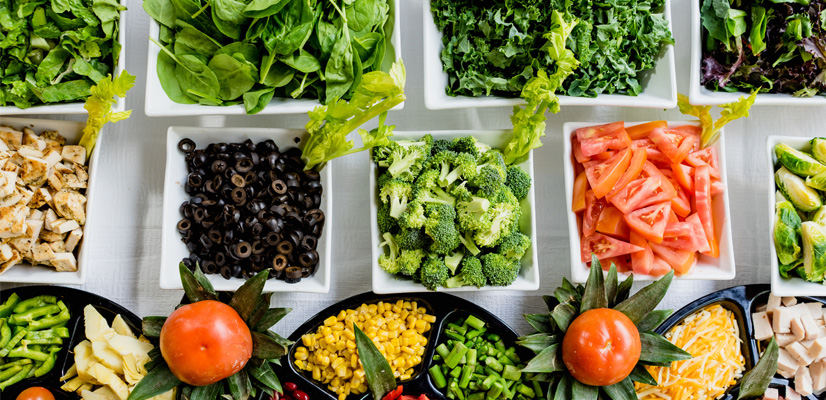
The first Australian study to evaluate the nutritional content of Kids’ Menus at restaurants and cafés has found the overwhelming majority are unhealthy and would be rated as ‘red’ under the traffic light classification system used in public hospitals.
The Kids Research Institute Australia and East Metropolitan Health Service researchers who led the study say the findings are concerning given the increasing frequency with which Australian families now eat out – on average 2-3 times a week – and highlight that the food environment surrounding our children is unsupportive of good health.
A research team led by The Kids and the East Metropolitan Health Service reviewed the menus of 787 cafes and restaurants located across a vast swathe of Perth stretching from the City of Swan in the north to the Shire of Serpentine-Jarrahdale in the south.
A third of the establishments reviewed offered a separate Kids’ Menu, usually designed for children under the age of 12 years. Of these, 70 per cent were classified as ‘red’ under the Healthy Options WA Food and Nutrition Policy traffic light classification system, and 99.2 per cent scored in the ‘unhealthy’ category using a validated scoring tool. Water was offered on only 1.5 per cent of the Kids’ Menus reviewed.
Nutritionist and study co-author Dr Amelia Harray, of The Kids Research Institute Australia and Curtin University, said restaurants or cafés that had a Kids’ Menu appealed to families because this suggested they were child friendly.
But the energy-dense, nutrient-poor nature of the food typically featured on such menus – combined with the increasing frequency with which Australian families eat out or order in prepared food – meant children were being exposed to high amounts of saturated fat, salt and added sugar on a regular basis.
What used to be the odd special occasion for parties or events is now a regular weekly habit for families.
“The Kids’ Menus we reviewed typically lacked nutritious choices such as whole-grain products, salads, vegetables and fruit-based desserts. Instead, they included a lot of foods high in fat and salt, like pizza or chicken nuggets and French fries, with sugar-sweetened beverages often bundled in as the default drink option.
“In addition, the portion sizes were often larger than most children would normally eat, which encourages the overconsumption of energy.”
Australian Bureau of Statistics figures from 2017-18 revealed energy-dense, nutrient-poor foods contributed 41 per cent of daily energy intake for children, and 35 per cent for adults. One-quarter of Australian children and two-thirds of Australian adults were classified as overweight or obese.
“An additional concern is that dietary behaviours established in childhood continue into adolescence and adulthood, so we want to support children to eat a variety of nutritious food from a young age,” Dr Harray said.
We need to empower parents to ask whether that side of chips, for example, can be substituted for something more nutritious.
Lead author Dr Gina Trapp, Head of Food and Nutrition at The Kids Research Institute Australia and an Australian Research Council DECRA Fellow at The University of Western Australia, said it would also be good to see some government initiatives around making more healthy choices available on Kids’ Menus or providing labels to enable parents to make more informed choices.
“This could take the form, for example, of an accreditation program to help parents identify the most nutritious options,” Dr Trapp said.
“Queensland and South Australia have launched healthy kids’ menu initiatives which demonstrate that jurisdictions are prioritising cafés and restaurants in their mission to improve the quality of the food environment for children – it would be great to see WA similarly prioritise the food environment as a critical factor in the health of our children.”
Tips for helping kids eat more healthily at restaurants and cafés
- Instead of bundling meals with a drink, chips and dessert, cafés and restaurants could separate the food from the drinks and sides so the extras aren’t a given, and so parents can make a choice
- Offer water instead of sweetened beverages
- Parents could ask whether adult meals are available in smaller portion sizes, suitable for children and at a reduced price, and order a side of seasonal vegetables.
The study, funded by the East Metropolitan Health Service (Western Australian Department of Health) was a collaboration between The Kids Research Institute Australia, the East Metropolitan Health Service, The University of Western Australia, Curtin University, Edith Cowan University, and the University at Buffalo.
The paper – The Nutritional Quality of Kids’ Menus from Cafés and Restaurants: An Australian Cross-Sectional Study – was published in the MDPI journal Nutrients.
About East Metropolitan Health Service:
This research was conducted as part of the implementation of the health service’s Obesity Prevention Strategy which recognises that over one hundred complex inter-related and reinforcing factors can lead to excess weight gain, overweight and obesity, and many are outside a person’s control. Excess body weight impacts people of all ages and socioeconomic groups and there is no single or simple solution. We are committed to addressing the complex factors that contribute to obesity within our community, and the impact on patients and the care we provide them. By better understanding the food environments in our region we can identify issues of concern to inform local public health responses.
